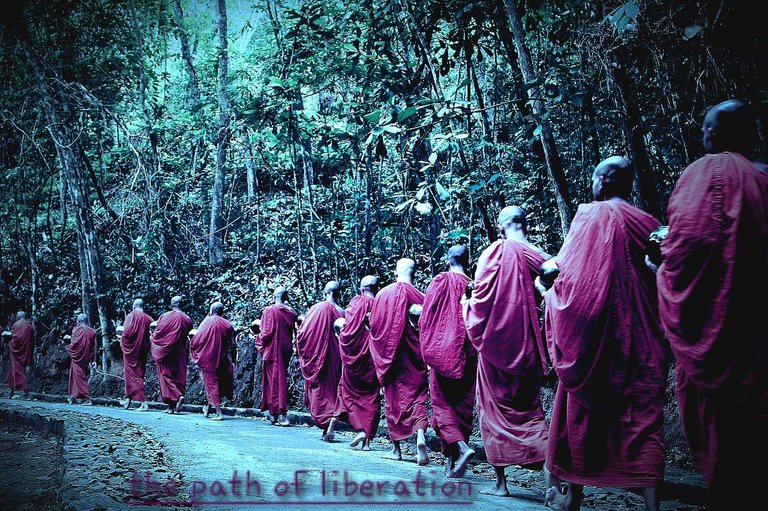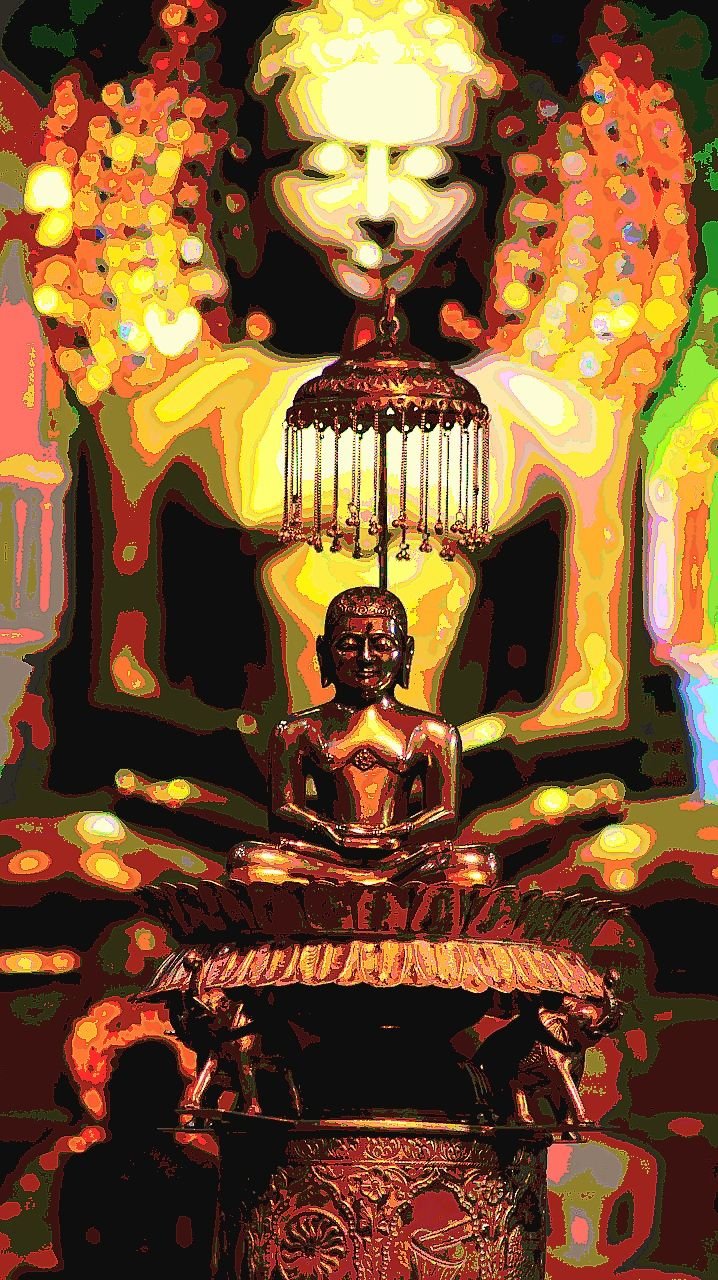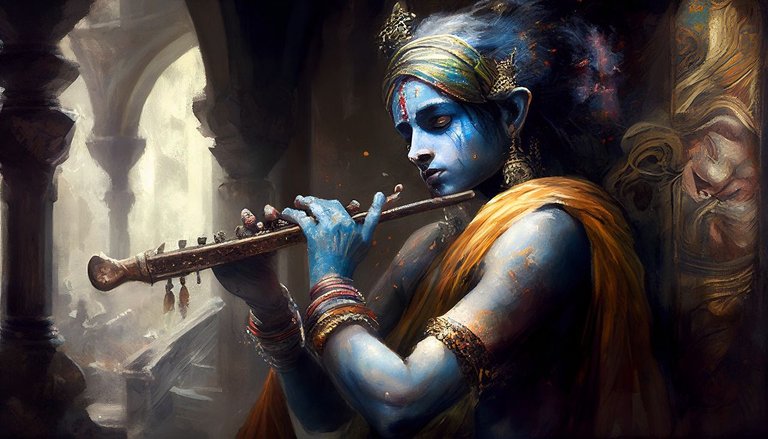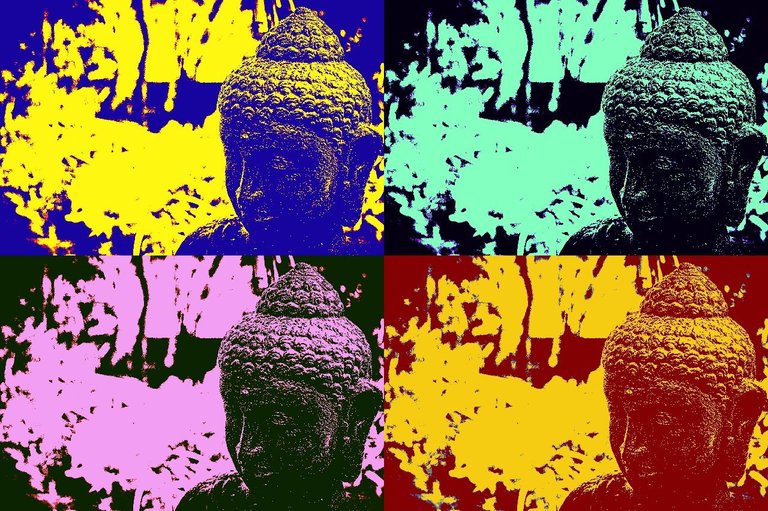Any thoughtful or self-reflective person might ask themselves at some point "what is the perfection of life?" or "what is the goal of life?" Depending on your background or upbringing, you may come to any number of conclusions when asking that question.

The ancient culture of the east has come up with a word which has become popular in our Western lexicon, although perhaps for quite a different reason. This is the word Nirvana. We may have heard of this word as the name for that famous popular music band from Seattle in the USA who were the flavour of the month in the 1990s or thereabout.

Those who are a little wider read will recognise the word Nirvana as a concept which is found in Buddhist philosophy. However, in actual fact the word Nirvana predates Buddhism by, some say, many centuries and comes from the original Sanskrit Vedas of ancient India.
According to the Buddhist doctrine, Nirvana is indeed seen as the goal or perfection of human life. This word Nirvana is loosely translated to mean "extinguish" or "cessation". The prefix "nir" is a negation which implies the doing away with. The second syllable "vava" has numerous translations from the original sanskrit.

One translation of this syllable means fire, as in the extinguishing of the flame. Another translation of the word is Forest, as in moving away from or out of the forest of darkness.
Essentially the extinguishing of the flame implies the moment of ending of the repeated cycle of birth and death for the entrapped eternal spirit soul. At this point the eternal living being that was once housed in the temporary body, is said to be able to transcend its shackles never to return as the cycle of repeated birth and death is brought to an end.

This extinguishing of the flame is also used in Buddhism to suggest the removal of the three flames or fires, which can be and example or analogy referring to the leaving behind of the Vedic rituals and ceremonies, which often included fire sacrifices.
It is also used to imply the leaving behind of the three pitfalls for the living entity, namely greed, aversion, and ignorance. In this way Buddhism shows its roots has lying in an older Sanskrit Vedic culture and body of knowledge.

This word Nirvana is found in the final text of chapter two in Bhagavad Gita. The Gita used the Sanskrit word Nirvana some say up to 2,000 years before the arrival of Buddha in around 600 BC where he established what is today the doctrine of Buddhism.
This word Nirvana is here also referred to as the goal of life; however it is qualified with the prefix "brahma" meaning spiritual or divine. This indeed is seen as the goal of life. This attainment of spiritual liberation as the loose English translation suggests, is exactly the goal that all living entities should aspire towards when they find themselves in this rare valuable human form of life, with the opportunity that it offers the entrapped spirit soul.

In the ancient Vedic conclusion as well as in the later Buddhist tradition, two types of Nirvana are recognised. The one is with an appendix of sorts and the other is without. In other words, it is recognised that one can achieve a type of Nirvana or liberation while still on this material Earth in this material body, and thus continue to live out a remainder of one's life.
Or, on the other hand, the Nirvana without qualification is that achieved when we finally leaves this body at the time of death. Aspiring for the final liberation does not imply the cessation of existence all together. This is the popular conclusion of the Buddhist tradition. However, in the Krishna Bhakti tradition, Nirvana or liberation at the time of death is said to be merely the association of this illusory temporary material existence.

One's real eternal spiritual existence is said to be not that of no-being, but that of return to our original state of being, which is as eternal spirit soul, in the kingdom of God ,or the spiritual world, in relationship with our divinity or god.
The Subtle difference between the impersonal and personal concept of the godhead, as well as the ultimate state of liberation or Nirvana, is what divides the two core schools of thought in the eastern traditions, as found in Buddhism versus Vedanta Philosophy.

Both agree though, that these two different types of Nirvana or liberation are available to the aspirant. Weather it's in cessation of consciousness or awakening of original full consciousness, still the aim is to wipe out the obstructions of illusion and to reawaken the original state of being.
Fortunately we do not have to wait until the time of death to achieve this state of Nirvana liberation. The successful yogi can in this very lifetime achieve this state of Nirvana where one is already so to speak in the spiritual world or liberated, despite still being housed in this temporary material body.

Such liberated souls are said to have walked amongst us over the centuries and millenia. These empowered beings have been able to render service to the rest of humanity on the path back, and help to fulfill the greater plan for the evolution of the human existence. Indeed Nirvana can be attained by following the path laid out in Bhagavad Gita and Bhagavat Purana, as recorded by Srila Vyasadeva, the compiler of the Vedas.

With this Final verse from chapter 2 of bhagavad Gita, we find the goal known as Nirvana to be presented as the conclusion of all that has been mentioned up until now in this chapter. This goal can be attained by anyone who is sincere in their aspiration and who has been blessed by Good Fortune to come across the knowledge regarding the attainment of this goal from a reliable source.
Bhagavad Gita ch2:72
एषा ब्राह्मी स्थितिःपार्थ नैनां प्राप्य विमुह्यति ।
स्थित्वास्यामन्तकालेऽपि ब्रह्मनिर्वाणमृच्छति ॥ ७२ ॥
eṣā brāhmī sthitiḥ pārtha
naināṁ prāpya vimuhyati
sthitvāsyām anta-kāle ’pi
brahma-nirvāṇam ṛcchati
SYNONYMS
eṣā—this; brāhmī—spiritual; sthitiḥ—situation; pārtha—O son of Pṛthā; na—never; enām—this; prāpya—achieving; vimuhyati—bewilders; sthitvā—being so situated; asyām—being so; anta-kāle—at the end of life; api—also; brahma-nirvāṇam—spiritual (kingdom of God); ṛcchati—attains.
TRANSLATION
That is the way of the spiritual and godly life, after attaining which a man is not bewildered. Being so situated, even at the hour of death, one can enter into the kingdom of God.
PURPORT
One can attain Kṛṣṇa consciousness or divine life at once, within a second-or one may not attain such a state of life even after millions of births. It is only a matter of understanding and accepting the fact. Khaṭvāṅga Mahārāja attained this state of life just a few minutes before his death, by surrendering unto Kṛṣṇa. Nirvāṇa means ending the process of materialistic life. According to Buddhist philosophy, there is only void after the completion of this material life, but Bhagavad-gītā teaches differently. Actual life begins after the completion of this material life. For the gross materialist it is sufficient to know that one has to end this materialistic way of life, but for persons who are spiritually advanced, there is another life after this materialistic life. Before ending this life, if one fortunately becomes Kṛṣṇa conscious, he at once attains the stage of Brahma-nirvāṇa. There is no difference between the kingdom of God and the devotional service of the Lord. Since both of them are on the absolute plane, to be engaged in the transcendental loving service of the Lord is to have attained the spiritual kingdom. In the material world there are activities of sense gratification, whereas in the spiritual world there are activities of Kṛṣṇa consciousness. Attainment of Kṛṣṇa consciousness even during this life is immediate attainment of Brahman, and one who is situated in Kṛṣṇa consciousness has certainly already entered into the kingdom of God.
Brahman is just the opposite of matter. Therefore brāhmī sthitiḥ means "not on the platform of material activities." Devotional service of the Lord is accepted in the Bhagavad-gītā as the liberated stage. Therefore, brāhmī-sthitiḥ is liberation from material bondage.
Śrīla Bhaktivinode Ṭhākur has summarized this Second Chapter of the Bhagavad-gītā as being the contents for the whole text. In the Bhagavad-gītā, the subject matters are karma-yoga, j�āna-yoga, and bhakti-yoga. In the Second Chapter karma-yoga and j�āna-yoga have been clearly discussed, and a glimpse of bhakti-yoga has also been given, as the contents for the complete text.
Thus end the Bhaktivedanta Purports to the Second Chapter of the Śrīmad-Bhagavad-gītā in the matter of its Contents.
Ref: Bhagavad Gita As It Is, translation and commentary by Swami A. C. Bhaktivedanta, original MacMillan 1972 edition.
Images pixabay
Congratulations @julescape! You have completed the following achievement on the Hive blockchain And have been rewarded with New badge(s)
Your next target is to reach 350 posts.
You can view your badges on your board and compare yourself to others in the Ranking
If you no longer want to receive notifications, reply to this comment with the word
STOPTo support your work, I also upvoted your post!
Check out our last posts:
Congratulations @julescape! You received a personal badge!
Wait until the end of Power Up Day to find out the size of your Power-Bee.
May the Hive Power be with you!
You can view your badges on your board and compare yourself to others in the Ranking
Check out our last posts: